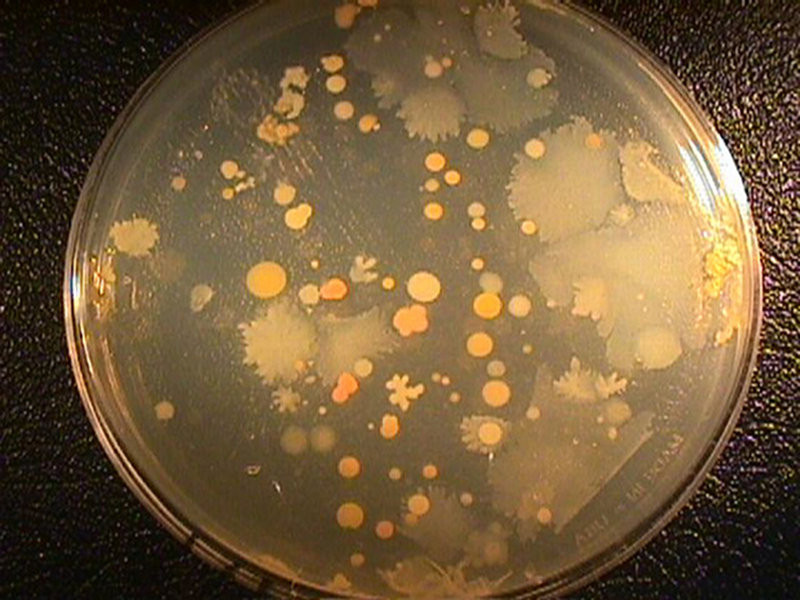
By Christina Kellogg, U.S. Geological Survey
July 16, 2012

Marine bacteria growing on an agar plate. Image courtesy of Lophelia II 2012 Expedition, NOAA-OER/BOEM. Download image (jpg, 116 KB).
Thanks to all the press about the human microbiome, most people now realize that we are all walking bags of microbes. They are on our skins and in our guts – the popular new factoid is that there are 10 times more bacterial cells in your body than human cells. Kind of makes you wonder who’s really in charge.
In any case, this has made my research a lot easier to explain to people. If we are walking bags of microbes, corals are sitting bags of microbes. Corals have microbes (bacteria, archaea, fungi, protists, and viruses) in their external mucus, tissue, and skeleton. During the Lophelia II project, I have been sampling the cold-water coral Lophelia pertusa in the Gulf of Mexico, trying to answer the questions “who are its microbes?” and “what are they doing?”
There are two main ways to answer the “who” question: using culture-based techniques or using molecular techniques. Culture-based techniques mean you actually grow the microbes. Molecular techniques typically are based on detecting nucleic acids (DNA or RNA) and do not depend on being able to grow the microbes. My lab has done both.
Our first attempts at culturing using a marine agar medium (basically a salty, protein-shake jello) showed us a lot of bacterial species that are also commonly seen in shallow-water corals (for the diehard micro fans, that would be alpha- and gamma-proteobacteria). When we used molecular techniques to pull out the DNA of the whole microbial community and sequenced it, we saw a lot of other bacterial types that were not represented in our culture experiment. That wasn’t surprising, since we already know that culture-based techniques usually only detect a fraction (one to ten percent) of the total bacteria.
You could say it is because some bacteria are picky eaters and we don’t know how to make what they like to eat, or we accidentally are leaving out some critical vitamins or supplements they need to grow. But now that we have some idea of what other kinds of bacteria are present in the coral, we are going to try again, catering to their tastes by using different kinds of nutrient agar (i.e., different varieties of bacterial food).
I just met you
And this is crazy
But here’s some agar
Grow in culture, maybe?